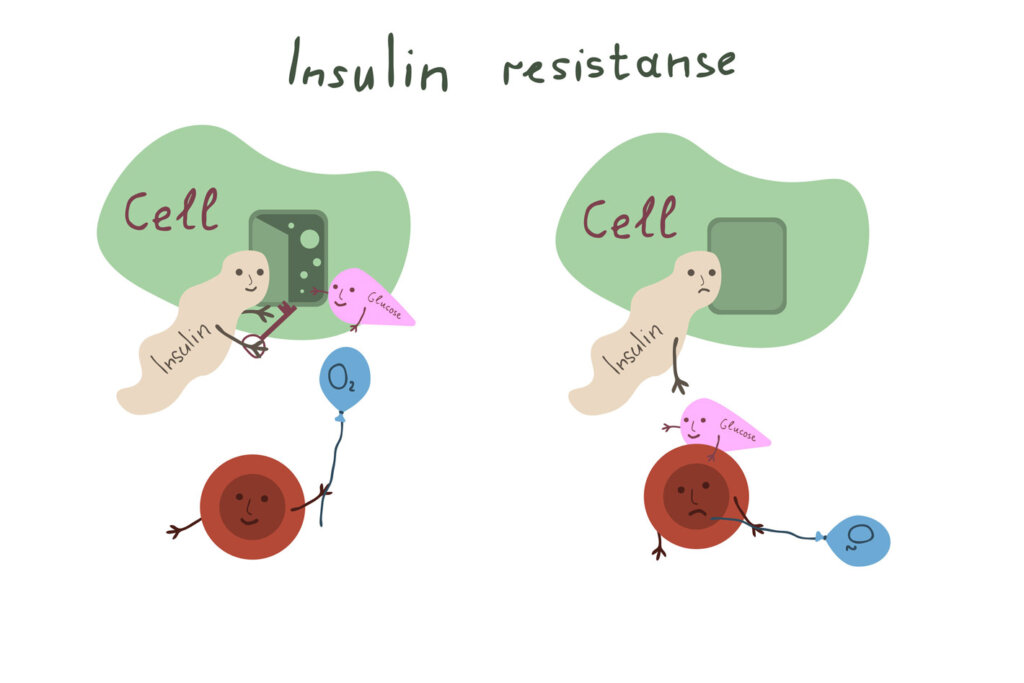PCOS is more common than you think. In fact, it is one of the most common endocrine disruptors for women of reproductive age with a prevalence ranging from 6 to 15%, with a world wide average of 4% to 8% of women.(1)
Many women experience symptoms associated with PCOS but have never received a formal diagnosis. Even medical providers will miss a diagnosis, especially if a woman is seemingly healthy and lean. According to the Rotterdam criteria, a PCOS diagnosis depends on identifying at least two of the following three features: anovulatory cycles, high androgen levels/androgen symptoms, and polycystic ovaries in ultrasound. These traits are quite common, and it is crucial to get a proper diagnosis to prevent complications of PCOS, such as heart disease, cancer, or diabetes.
PCOS is associated with obesity and insulin resistance (IR), although some women may not experience insulin resistance or obesity known as lean PCOS. Lean PCOS can also be accompanied by insulin insensitivity. IR leads to increased androgen levels and then prevents ovulation, worsening symptoms of elevated androgens, and, at times, estrogen dominance symptoms. When the body becomes less sensitive to insulin, the pancreas will increase insulin production to help get the glucose out of the bloodstream. Elevated insulin levels cause the liver to reduce the production of sex hormone-binding globulin. (As an aside, optimal insulin levels will be around 4-7)

Sex hormone-binding globulin is a protein in the blood that carries hormones around. You can think of this like a soccer mom driving her kids (the hormones) around in her van with car seats. The kids (hormones) can’t get out and play because they’re strapped in their seats. But once the soccer car mom is gone, the kids are going to be out playing soccer! However, too many kids “playing” leads to adverse symptoms, especially if they are naughty. Too much testosterone produced by the ovaries will be floating around, causing acne and facial hair if the sex hormone-binding globulin levels are low, so we need to get the kids back in the van!
Remember, elevated insulin stops the production of sex hormone-binding globulin. PCOS is associated with elevated androgen levels, LH levels, LH/FSH ratios, and high fasting insulin levels above 8.
What can we do about Insulin Resistance?
We need sex hormone-binding globulin to help us get the hormones under control and reduce symptoms. Improving insulin sensitivity is vital, and there is one plant I want you to meet that can do just this and help optimize androgen levels and support menstrual cycle regularity.

Flaxseed (Linum usitatissiumum)
Flaxseed (Linum usitatissiumum) is a beautiful flower that has a lovely seed. It is rich in a-linolenic acids or ALA, and phytoesterogenic lignans, and soluble and insoluble fiber. For women with high testosterone levels, we can add more flaxseed to their life to help reduce testosterone levels.
Flax seeds do more to help with PCOS as well. Let’s look at the ways.
- The lignans in flax can help to reduce androgen levels. The exact mechanism is still unknown. It may be that SHBG levels are increased due to a reduction in insulin levels. That’s more soccer mom vans to contain the excess testosterone and help reduce androgen symptoms. Bye-bye acne, hair where you don’t want it, and balding!! Taking flaxseeds is an internal approach to managing symptoms vs. using topicals! (3)
- Flax has also been found to improve metabolic parameters. One study found a significant decrease in participants’ fasting insulin levels compared to the control group and a substantial reduction in waist circumference. Reducing insulin levels in women with PCOS is one of the main treatment strategies for restoring ovulation. (2)
- Flaxseed supplementation can help restore regular menstrual cycles. (2)
- Omega 3 oil from flax was found to reduce LH levels and improve the LH to FSH ratio. (4) Other studies have shown high levels of androgens present with excellent omega 6 to omega 3 ratios. With further research, we may conclude that omega 3s are an essential part of balancing androgen levels in women with PCOS. (5)
- Flaxseed has been shown to reduce leptin and triglycerides, both of which are important for cardiometabolic health.

How to incorporate these powerful seeds into your life?
- Add 1-2 tablespoons of freshly ground seeds to your foods. Sprinkle on salads, soups, yogurt, add to smoothies.
- Download flaxseed-recipes!
Learn more about working with Dr. Guan
References
- https://www.cochranelibrary.com/cdsr/doi/10.1002/14651858.CD007506.pub3/abstract
- https://nutritionj.biomedcentral.com/articles/10.1186/s12937-020-0524-5
- https://www.ncbi.nlm.nih.gov/pmc/articles/PMC3941370/
- https://www.ncbi.nlm.nih.gov/pmc/articles/PMC4819211/
- https://academic.oup.com/ajcn/article/93/3/652/4597741?itm_medium=sidebar&itm_content=ajcn&itm_source=trendmd-widget&itm_campaign=trendmd-pilot
*The Rotterdam criteria17 have suggested a broader definition for PCOS, with two out of three of the following criteria being diagnostic of the condition:
- polycystic ovaries (either 12 or more follicles or increased ovarian volume [> 10 cm3])
RCOG Green-top Guideline No. 33 4 of 15 © Royal College of Obstetricians and Gynaecologists oligo-ovulation or anovulation - clinical and/or biochemical signs of hyperandrogenism.
It should be noted that the diagnosis of PCOS can only be made when other aetiologies for irregular cycles, such as thyroid dysfunction, acromegaly or hyperprolactinemia, have been excluded if there is clinical suspicion. Women with non-Caucasian ethnicity might need different criteria to diagnose PCOS.




